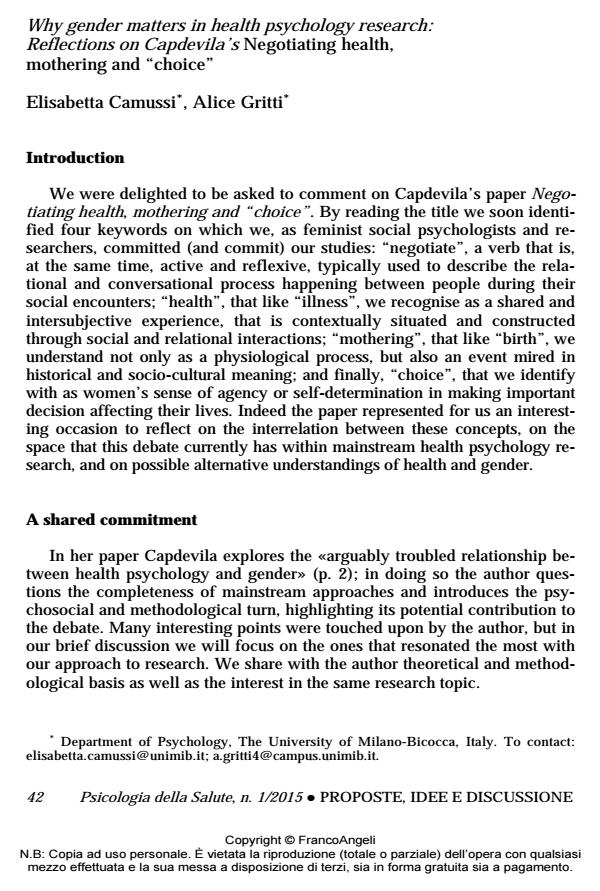Why gender matters in health psychology research: Reflections on Capdevila’s Negotiating health, mothering and "choice"
Titolo Rivista PSICOLOGIA DELLA SALUTE
Autori/Curatori Elisabetta Camussi, Alice Gritti
Anno di pubblicazione 2015 Fascicolo 2015/1
Lingua Inglese Numero pagine 10 P. 42-51 Dimensione file 59 KB
DOI 10.3280/PDS2015-001005
Il DOI è il codice a barre della proprietà intellettuale: per saperne di più
clicca qui
Qui sotto puoi vedere in anteprima la prima pagina di questo articolo.
Se questo articolo ti interessa, lo puoi acquistare (e scaricare in formato pdf) seguendo le facili indicazioni per acquistare il download credit. Acquista Download Credits per scaricare questo Articolo in formato PDF

FrancoAngeli è membro della Publishers International Linking Association, Inc (PILA)associazione indipendente e non profit per facilitare (attraverso i servizi tecnologici implementati da CrossRef.org) l’accesso degli studiosi ai contenuti digitali nelle pubblicazioni professionali e scientifiche
- Hacking women’s health: A new methodology Elisabetta Camussi, Cinzia Sassi, Edoardo Zulato, Chiara Annovazzi, Maria Cristina Ginevra, in Journal of Prevention & Intervention in the Community /2020 pp.174
DOI: 10.1080/10852352.2019.1624356
Elisabetta Camussi, Alice Gritti, Why gender matters in health psychology research: Reflections on Capdevila’s Negotiating health, mothering and "choice" in "PSICOLOGIA DELLA SALUTE" 1/2015, pp 42-51, DOI: 10.3280/PDS2015-001005